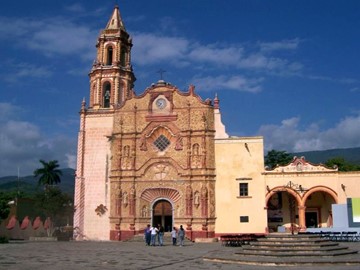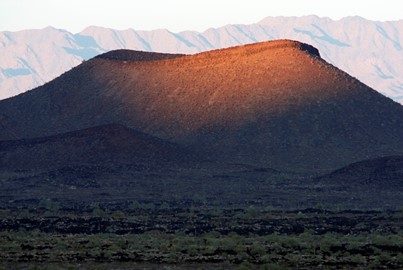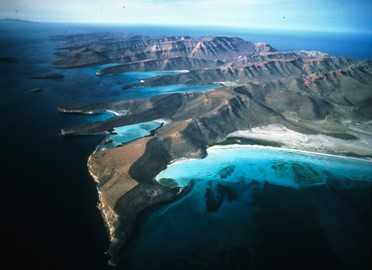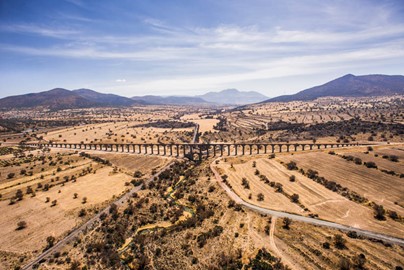region :: latin america and the caribbean
Zacatecas
The Historic Centre of Zacatecas, a UNESCO World Heritage site in Mexico, is renowned for its well-preserved colonial architecture and rich history rooted in silver mining. Established in the 16th century, the city features striking pink stone buildings, ornate churches like the Zacatecas Cathedral, and a unique urban layout shaped by its mountainous terrain. Its cultural significance and historical charm make it a standout example of Spanish colonial influence in the Americas.
Popocatepetl Monasteries
The Popocatepetl Monasteries, a UNESCO World Heritage site in Mexico, are a collection of 14th and 15th-century monasteries built by Augustinian, Franciscan, and Dominican friars. These well-preserved structures showcase a unique blend of European architectural styles adapted to the local environment, reflecting the early evangelization efforts in the New World. Notable for their historical and cultural significance, the monasteries feature impressive frescoes, altarpieces, and layouts that influenced later... Read More
Rock Paintings of the Sierra de San Francisco
The Rock Paintings of the Sierra de San Francisco, a UNESCO World Heritage site, feature prehistoric art created by the indigenous Cochimi people. Dating back thousands of years, these well-preserved murals depict humans, animals, and abstract forms in vibrant red, black, and white hues, offering insight into ancient cultural and spiritual practices. Discovered in a remote desert region, the site includes hundreds of caves and rock shelters, recognized for their historical and archaeological significance.
Uxmal
Uxmal, a UNESCO World Heritage site in Mexico, is a remarkably preserved ancient Mayan city known for its intricate stone architecture and historical significance. Flourishing between 600 and 1000 AD, it features the towering Pyramid of the Magician, the ornate Governor’s Palace, and a sophisticated quadrangle layout, showcasing Mayan engineering and artistry. The site reflects a rich cultural legacy, with structures adorned with detailed carvings of deities, geometric patterns, and astronomical alignments.... Read More
Querétaro
Querétaro, a UNESCO World Heritage site in Mexico, is renowned for its well-preserved colonial architecture, featuring a historic center with cobblestone streets, ornate churches, and elegant plazas. Founded in 1531, it blends indigenous and Spanish influences, evident in landmarks like the Aqueduct of Querétaro and the Church of Santa Rosa de Viterbo. The city played a key role in Mexico’s independence movement, hosting significant historical events. Today, it’s a cultural hub, attracting visitors with its... Read More
Hospicio Cabañas
Hospicio Cabañas, a UNESCO World Heritage site in Mexico, is a historic complex renowned for its architectural beauty and cultural significance. Founded in the late 18th century as a hospital, orphanage, and almshouse by Bishop Juan Cruz Ruiz de Cabañas, it features a neoclassical design by architect Manuel Tolsá. The site is celebrated for its stunning murals by José Clemente Orozco, including the masterpiece 'The Man of Fire,' which adorn its chapel. Today, it serves as a cultural center, showcasing art a... Read More
Tlacotalpan
Tlacotalpan, a UNESCO World Heritage site in Mexico, is a charming colonial town renowned for its well-preserved Spanish architecture and vibrant cultural traditions. Founded in the 16th century along the Papaloapan River, it features colorful buildings, broad streets, and a laid-back atmosphere that reflects its historical significance as a trading hub. The town’s unique blend of indigenous, Spanish, and Caribbean influences is evident in its music, cuisine, and annual Candelaria festival, making it a capt... Read More
Campeche
The Fortified Town of Campeche, a UNESCO World Heritage site in Mexico, is a well-preserved example of a colonial port city defended by an extensive fortification system. Established in the 16th century, it features a historic urban layout with colorful buildings, cobblestone streets, and notable structures like the Cathedral of Our Lady of the Immaculate Conception. Its strategic walls, bastions, and forts, built to protect against pirate attacks, reflect a blend of Spanish and indigenous influences, makin... Read More
Xochicalco
Xochicalco, a UNESCO World Heritage site in Mexico, is a remarkably preserved pre-Columbian archaeological zone known for its intricate architecture and cultural significance. Flourishing between 650 and 900 CE, it served as a political, religious, and commercial hub, blending influences from Teotihuacan, Maya, and Zapotec civilizations. The site’s highlights include the Temple of the Feathered Serpent, adorned with detailed carvings, and an advanced underground observatory for tracking celestial events. It... Read More
Franciscan Missions in the Sierra Gorda
The Franciscan Missions in the Sierra Gorda, a UNESCO World Heritage site in Mexico, are a remarkable example of 18th-century colonial architecture and religious heritage. Built by Franciscan friars between 1750 and 1760, these five missions—featuring ornate facades and intricate Baroque designs—served to evangelize indigenous communities. Their historical significance and well-preserved condition highlight their role in shaping the region’s cultural landscape, earning them global recognition.
Luis Barragán House and Studio
The Luis Barragán House and Studio, a UNESCO World Heritage site in Mexico, is a masterful example of modern architecture designed by the renowned architect Luis Barragán between 1947 and 1948. This iconic residence showcases his innovative use of color, light, and space, blending traditional Mexican elements with minimalist design. Preserved as a museum, it offers insight into Barragán’s creative process and remains a testament to his lasting influence on global architecture.
Tequila
The Agave Landscape and Ancient Industrial Facilities of Tequila, a UNESCO World Heritage site in Mexico, showcase a unique blend of natural and cultural heritage in Mexico. This region features expansive blue agave fields, cultivated for centuries to produce tequila, alongside historic distilleries and haciendas that reflect traditional production methods. Recognized for its significance in shaping tequila’s global identity, the site highlights the interplay between agriculture, industry, and cultural trad... Read More
Central University City Campus
The Central University City Campus of the National Autonomous University of Mexico (UNAM), a UNESCO World Heritage site, is a remarkable example of 20th-century modernist architecture and urban planning. Designed by prominent Mexican architects and artists, including Mario Pani and Diego Rivera, the campus integrates functional buildings with vibrant murals and sculptures, reflecting Mexico’s cultural identity. Constructed in the 1950s, it serves as a hub for education and research while showcasing innovati... Read More
San Miguel and Jesús Nazareno
San Miguel and the Sanctuary of Jesús Nazareno de Atotonilco, a UNESCO World Heritage site in Mexico, exemplify the fusion of European and Latin American cultures through stunning Mexican Baroque architecture and art. Established in the 16th century, San Miguel evolved into a vibrant colonial town, while the nearby 18th-century Jesuit sanctuary, renowned for its intricate murals and oil paintings, reflects profound religious and artistic heritage. Together, they highlight a rich historical exchange and arch... Read More
Monarch Butterfly Biosphere
The Monarch Butterfly Biosphere, a UNESCO World Heritage site in Mexico, serves as a critical wintering ground for millions of monarch butterflies migrating from North America. This unique ecological sanctuary, recognized for its outstanding universal value, protects the butterflies' overwintering habitat within a network of oyamel fir forests. The site showcases a remarkable natural phenomenon, where dense clusters of butterflies blanket the trees, creating a stunning display of orange and black. Conservat... Read More
Camino Real de Tierra Adentro
The Camino Real de Tierra Adentro, a UNESCO World Heritage site in Mexico, is a historic trade route stretching over 2,500 kilometers, connecting Mexico City to the northern territories during the Spanish colonial period. Established in the 16th century, it facilitated the exchange of goods, ideas, and cultures between Spain and its colonies, playing a vital role in the economic and social development of the region. The route features a network of trails, bridges, and settlements, with notable historic site... Read More
Caves of Yagul and Mitla
The Caves of Yagul and Mitla, a UNESCO World Heritage site in Mexico, showcase an extraordinary collection of prehistoric rock art and archaeological remains dating back over 10,000 years. This site features well-preserved caves and shelters adorned with intricate paintings and carvings, offering valuable insights into the lives of early hunter-gatherer communities. Excavations have revealed ancient tools, ceramics, and evidence of early maize cultivation, highlighting the region's significance in the devel... Read More
El Pinacate and Gran Desierto
El Pinacate and Gran Desierto, a UNESCO World Heritage site in Mexico, is a striking volcanic landscape featuring dramatic craters, lava flows, and vast sand dunes. This unique ecosystem supports a diverse array of desert wildlife and rare plant species, adapted to its arid conditions. Recognized for its geological significance and biodiversity, it stands as a testament to the natural beauty and ecological resilience of Mexico’s desert regions.
Gulf of California
The Gulf of California, a UNESCO World Heritage site in Mexico, is a stunning marine ecosystem renowned for its exceptional biodiversity. This unique body of water hosts an array of endemic species, vibrant coral reefs, and dramatic underwater landscapes, making it a critical habitat for marine life. Its striking natural beauty and ecological significance draw scientists and conservationists worldwide to study and protect its rich aquatic environment.
Calakmul
Calakmul, a UNESCO World Heritage site in Mexico, is an ancient Maya city hidden deep within the jungle, renowned for its impressive pyramids, stelae, and intricate carvings that offer a glimpse into Maya civilization at its peak. Flourishing between the 6th and 8th centuries, it was a major political and cultural center, rivaling Tikal in power and influence. The site features over 6,000 structures, including one of the tallest pyramids in the Maya world, and is surrounded by a vast biosphere reserve teemi... Read More
Aqueduct of Padre Tembleque
The Aqueduct of Padre Tembleque, a UNESCO World Heritage site in Mexico, is a remarkable 16th-century engineering feat constructed under the direction of Franciscan friar Francisco de Tembleque. This hydraulic system, stretching nearly 48 kilometers, was designed to transport water from springs to local communities, blending Spanish and indigenous construction techniques. Its most striking feature is the series of well-preserved stone arches, with the tallest reaching over 38 meters, showcasing the architec... Read More
Archipiélago de Revillagigedo
The Archipiélago de Revillagigedo, a UNESCO World Heritage site in Mexico, is a remote volcanic island chain in the Pacific Ocean renowned for its unique biodiversity and pristine ecosystems. Often called the 'Galápagos of Mexico,' it hosts a variety of endemic species, including rare birds, marine life, and giant manta rays, thriving due to its isolation and protected status. The site’s dramatic landscapes, formed by volcanic activity, also serve as a critical habitat for migratory species and a living lab... Read More
Tehuacán Cuicatlán Valley
The Tehuacán-Cuicatlán Valley, a UNESCO World Heritage site in Mexico, is a biodiversity hotspot renowned for its unique ecological and cultural significance. This arid region features one of the richest concentrations of columnar cacti in the world and evidence of early human agriculture, including the domestication of crops like maize dating back over 5,000 years. Its fossil deposits, ancient water management systems, and archaeological sites highlight its importance as a cradle of Mesoamerican civilizati... Read More
León Viejo
The Ruins of León Viejo, a UNESCO World Heritage site in Nicaragua, offer a glimpse into one of the oldest Spanish colonial settlements in the Americas, founded in 1524 by Francisco Hernández de Córdoba. Abandoned in 1610 due to volcanic activity and earthquakes, this well-preserved archaeological site features remnants of homes, a cathedral, and a fortress, reflecting early colonial life. Excavations have revealed artifacts and human remains, providing insight into the daily lives and challenges of its inh... Read More
León Cathedral
León Cathedral, a UNESCO World Heritage site in Nicaragua, is a stunning example of colonial architecture blending Baroque and Neoclassical styles. Constructed between 1747 and the early 19th century, it boasts an ornate facade, grand arches, and a richly decorated interior with notable artworks and the tomb of poet Rubén Darío. Its robust design has withstood earthquakes, volcanic eruptions, and time, making it a symbol of resilience and cultural heritage. The cathedral stands as a testament to the region’... Read More
























